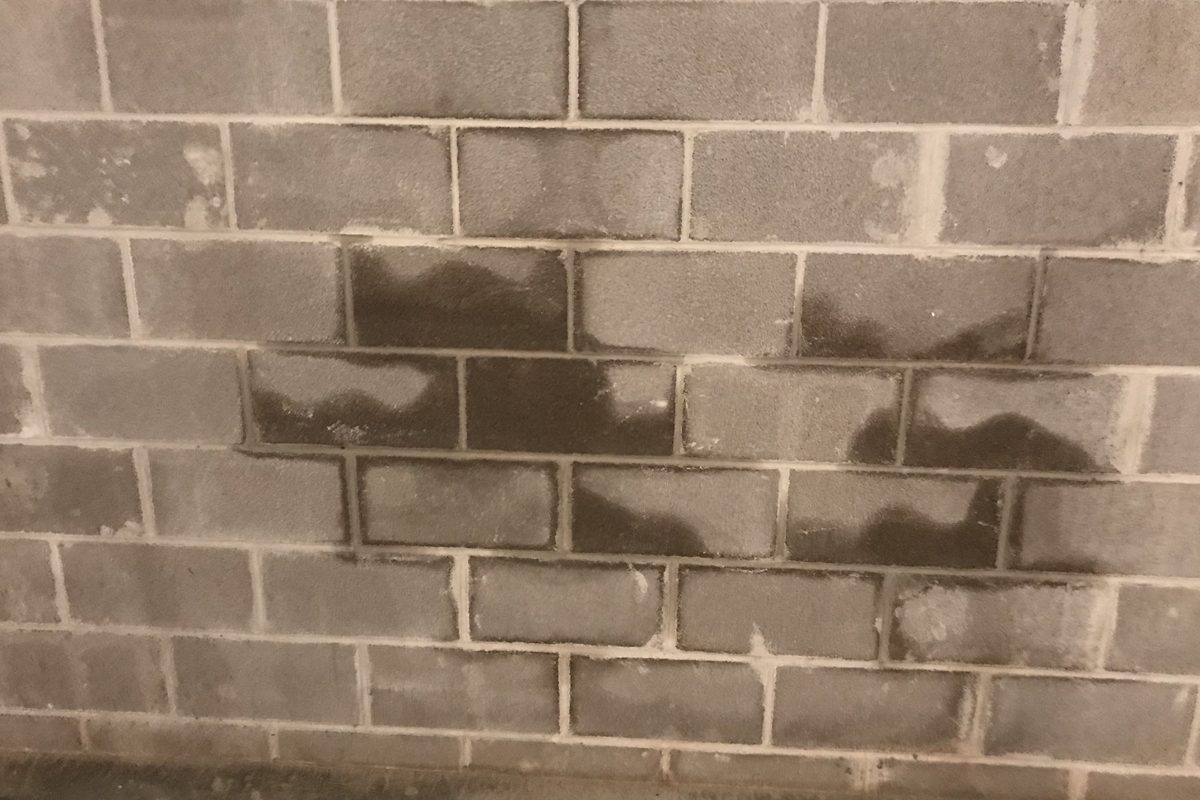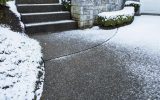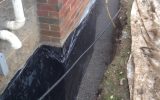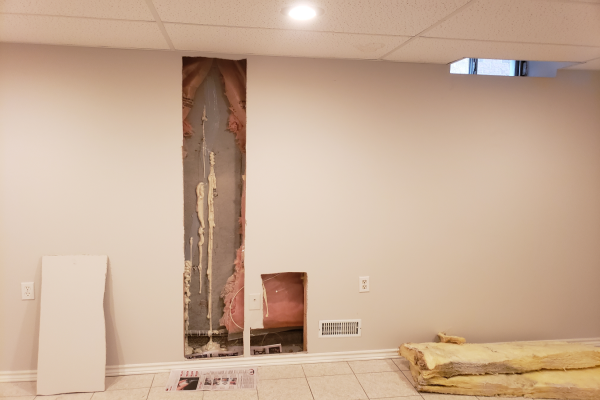If there are signs in your basement that the foundation has leaked you want to get those leaks fixed in the short term to ensure that there you have no headaches in the future. In this post I will discuss the considerations and processes pertaining to the repair of leaky foundation walls.
Your foundation wall is leaking, right?
It may seem like a stupid question but we regularly run into situations where a wet basement is caused by leaking plumbing. Yes, there are homeowners who don’t realize that the tap is leaking water onto the basement floor. Step one is to always confirm where the water in the basement is coming from – a plumbing leak won’t go away if you fix the foundation wall…
Once it is established that the foundation wall is, in fact, leaking, we can go about repairing the wall leak.
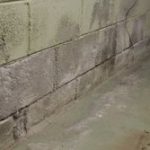
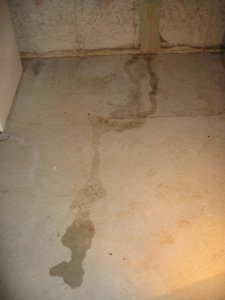
Considerations when fixing leaking foundation walls
When your foundation wall is leaking, ground water under pressure from the soil outside (hydrostatic pressure) is being pushed through your foundation wall; usually through foundation cracks. Check out our post on typical sources of basement leaks.
Now that we know the foundation wall is leaking, the next step is to look at the different foundation repair approaches that are available to us. We could:
- Prevent water from penetrating the foundation wall;
- Fill the void(s) in the foundation through which the water is passing; and
- Control the water once it has entered the basement so that it doesn’t get onto the basement floor.
Another consideration is the location of the leak in the foundation wall as the location of the leak will certainly affect the feasibility of one or more of the repair approaches. For example, if a leaking foundation crack is behind the hot water heater, thereby rendering it inaccessible from inside, then we will have to stop the foundation wall from the outside.
Need help? Contact us.
The foundation type is also a factor; a concrete block wall is hollow, so filling the void(s) through which the water is passing is not a feasible repair method.
Clearly, choosing the most suitable method to fix the leak in a foundation is not always straightforward; fortunately, in practice it is generally quite simple. Here are a couple of links to comprehensive posts you will want to read through:
Basement waterproofing methods; and
The best basement waterproofing solutions
The “broad-brush” approach to waterproofing leaking foundation walls
I would agree that taking all kinds of different factors into consideration when deciding on how to waterproof a leaking wall complicates things. Perhaps that is why exterior foundation waterproofing has been the dominant basement waterproofing repair since the start of the residential basement waterproofing industry. The approach is simple: waterproof the entire wall on the exterior, regardless of whether there is one crack or ten cracks. Obviously, the more walls that are waterproofed the less of a risk of a foundation leak down the road.
Digging around your house is a big deal and comes with a big price. For many homeowners, destructive excavation and a bill in the thousands of dollars isn’t happening.
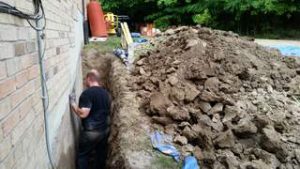
How exterior foundation walls are waterproofed
There are circumstances when it makes a lot of sense to excavate and waterproof one or more foundation walls. In my opinion, this approach should be taken when there are multiple leaks behind finished basement walls that cannot be opened and when there is evidence that the foundation is deteriorating because it is always wet.
Waterproofing a foundation on the exterior is accomplished in several steps:
- The foundation wall is excavated;
- The excavated wall is cleaned;
- Cracks are filled with hydraulic cement;
- The foundation walls are coated with an elastic rubber membrane and foundation wrap;
- The existing weeping tile is removed and replaced; and
- The soil is back-filled and compacted.
- There are options when fixing foundation cracks
Some people logically wonder why they should dig up their foundation when all that is leaking is a foundation crack or some other minor leak. If you can save several thousands of dollars why wouldn’t you?
In such a case there are two obvious choices:
-
- Excavate the exterior wall where the crack is and seal it from outside; or
- Pressure inject the foundation crack from the interior so that the crack no longer exists.
Both of these repair options will permanently fix the foundation leak so they both work fine, as long as the repairs are done properly by experienced and knowledgeable technicians.
An exterior foundation crack repair involves the same steps as general foundation waterproofing, except that the weeping tile doesn’t get replaced. An interior foundation crack repair involves the pressurized injection of resin into the crack; once the resin solidifies, the crack no longer exists – problem fixed.
For an interesting companion article check out this post: Is it better to fix a leak from the inside or the outside?
Interior crack injection has several advantages over exterior crack repair:
- Crack injection costs less than half of what it costs for exterior crack repair;
- Crack injection is done in about two hours whereas exterior crack repairs take all day (are you taking time off work?); and
- Crack injection can be done in short order whereas excavation activities require the marking of underground utilities on your property; an activity that can take several weeks.
Fixing leaky concrete block foundation walls
Concrete block foundations are a different beast compared to poured concrete foundations because block foundations are hollow large bricks compared to solid concrete. Because of the nature of concrete blocks there are only two ways to stop block foundation leaks.
Leaking concrete block foundations can only be fixed in two ways:
- Exterior excavation and waterproofing; and
- By installing an interior perimeter drainage system.
Both of these foundation waterproofing methods are invasive but effective in fixing a leaky foundation. Exterior waterproofing is performed as described above, the interior waterproofing method is something entirely different.
How leaking block foundation walls are fixed from the inside
A leaking block foundation wall is fixed from the inside by draining the block walls into a drain system installed beneath the basement floor. The captured water is then routed to a sump pump for evacuation to outside.
Check out this page for more detail on interior perimeter drain systems
One of the big advantages of the interior perimeter drain system is that there is no digging around your foundation which tends to lower the cost as compared to exterior excavation and waterproofing and there is no damage to your landscaping.
So how will you get your leaky foundation wall fixed?
One of the biggest hurdles homeowners face is overcoming the price shock of waterproofing repairs proposed by a basement waterproofing contractor. Consequently, some homeowners decide to go the “do-it-yourself” route which you could certainly pursue but first, you should really know what you’re getting into.
Check out this post: Is waterproofing foundation walls a do-it-yourself project?

